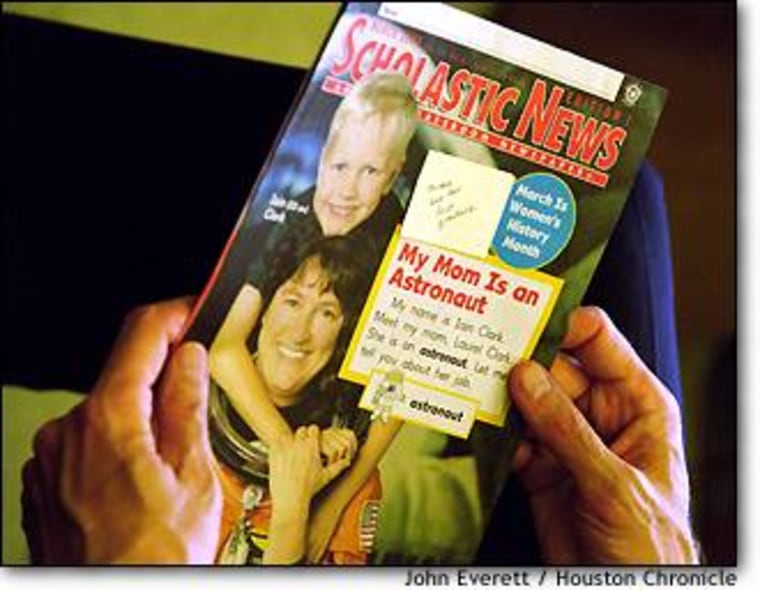At first the special Scholastic News issue featuring space shuttle Columbia astronaut Laurel Clark seemed too tragic to be used in the classroom. After the Columbia accident, the editors at the newspaper for school children quickly wrote teachers advising them not to use their newest issue. The four-page edition featured was a spread titled “My Mom Is an Astronaut,” including photos of Clark and her 8-year-old son Iain.
When he learned of the publication’s reticence, the astronaut’s husband, Jonathan Clark, urged the opposite. He asked Scholastic News to encourage teachers to use the issue, saying it’s what his wife would have wanted.
Laurel Clark, one of seven astronauts killed in the Feb. 1 disaster, was buried at Arlington National Cemetery on Monday.
Her husband, a NASA flight surgeon, said she loved children and teaching. Once he had asked her what she would do if she didn’t become an astronaut.
“And she said, ‘I’ll be a stay-at-home mom.’ It shows her perspective, (she) could stay at home and be a mom and be just as happy as being an astronaut. She relished both of those equally.”
In a letter to teachers on Scholastic’s Web site, Jon Clark wrote:
“Although this was a terrible loss for my son and me, as well as the rest of the Columbia families, and the nation and the world, we felt extremely proud that Laurel was an astronaut whose mission was to help make new discoveries to help humankind.
“So many emotions and issues are tied with this article now: sadness and hope, exploration and discovery, challenge and risk, to name a few. It is now up to the educators and parents to pass this spirit on to our legacy and future, our children.”
The response to the Scholastic issue, written for first- and second-grade students, has been very positive, said Jennifer Slackman, a spokeswoman for the publication.
Many teachers have “congratulated us on a great issue and tool to help them talk about what happened to Columbia,” Slackman said.
In the issue, Iain wrote brief explanations of his mother’s job.
“Here is my mom in space. Look at her hair!” he wrote, referring to a photograph of his mother orbiting the Earth in the shuttle, her hair standing on end.
“My mom worked hard to go to space,” he wrote. “She trained for over two years! Today, there are more women astronauts than ever before. I’m glad my mom is one of them!”
In his office at the Johnson Space Center, Jonathan Clark keeps a framed copy of the article’s cover shot: Iain, wearing his mom’s spaceflight helmet, seated next to her in her orange flight suit.
